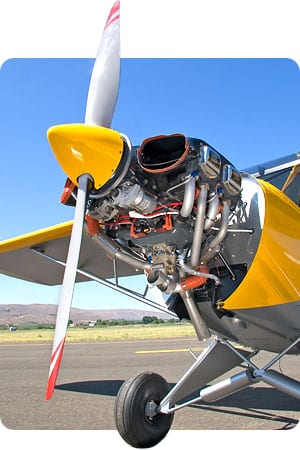When the term “light” is applied to aircraft, it can give the impression that the machine is somehow delicate. This is SO not the case when it comes to CubCrafters Carbon Cub LSA.
CubCrafters describes the Carbon Cub SS as an aircraft designed “for the pilot who REALLY wants to push the limits of Light Sport.”
As the name implies, the Carbon Cub is built from carbon fiber, which results in a strong and light airframe.
 General Manager Randy Lervold describes the Carbon Cub as a reinvention of the Piper Super Cub, an aircraft known as the work-horse for backcountry flying. “Carbon fiber and computer-aided design resulted in an airplane that is 250 pounds lighter than a Super Cub with 50% fewer parts,” he said.
General Manager Randy Lervold describes the Carbon Cub as a reinvention of the Piper Super Cub, an aircraft known as the work-horse for backcountry flying. “Carbon fiber and computer-aided design resulted in an airplane that is 250 pounds lighter than a Super Cub with 50% fewer parts,” he said.
Although it looks like a Sport Cub from the outside, the real difference between the Sport Cub and the Carbon Cub is under the cowl. The engine on the Carbon Cub is a 180-hp CC340.
 “It is basically a lighter version of a Lycoming,” said Lervold. Again, modern engineering helped save weight, such as removing the magnetos and replacing them with dual electronic ignitions. The horsepower-to-weight ratio produces a climb rate at sea level of 2,100 feet per minute with a pitch angle that, according to Lervold, is almost guaranteed to induce a display of colorful Anglo-Saxon references from the pilot on the first takeoff.
“It is basically a lighter version of a Lycoming,” said Lervold. Again, modern engineering helped save weight, such as removing the magnetos and replacing them with dual electronic ignitions. The horsepower-to-weight ratio produces a climb rate at sea level of 2,100 feet per minute with a pitch angle that, according to Lervold, is almost guaranteed to induce a display of colorful Anglo-Saxon references from the pilot on the first takeoff.
“I will bet you lunch that you will be surprised by the pitch angle,” he said. “In any other airplane it would be a stall — not in the Carbon Cub.”
The Carbon Cub also sports adjustable cowl flaps, an electric starter, and an ignition backup battery system.
The two wing tanks hold a total of 24 gallons of fuel. The fuel is gravity fed and the gauges are sight gauges in the wing roots. The fuel selector valve is a four-position design.
Careful attention to the power-to-weight ratio has resulted in a Cub that can takeoff (and land) from parcels of land that are largely unaccessible, except by helicopter or pack mule. The Carbon Cub is also outfitted with vortex generators that increase low speed maneuverability.
In addition, the airframe is designed as a cage around the pilot and passenger. CubCrafters officials note the design was tested for strength using lead weights and hydraulic pressure and that the frame greatly exceeds the requirements for LSA. According to the CubCrafters website, the complete 4130 reinforced fuselage was tested to 1,865 pounds, which is is 40% higher than LSA requirements set forth by the ASTM.
The pilot’s seat is formed from carbon fiber and Amsafe airbag harnesses are available as an option.
 The interior of the Carbon Cub is wider than the original Piper Cub and, like the Sport Cub, the door has been redesigned to make it easier to get in and out of the plane.
The interior of the Carbon Cub is wider than the original Piper Cub and, like the Sport Cub, the door has been redesigned to make it easier to get in and out of the plane.
Price for a 2012 Carbon Cub SS ready-to-fly with standard features is $163,280.
For more information: CubCrafters.com
People who read this article also read articles on airparks, airshow, airshows, avgas, aviation fuel, aviation news, aircraft owner, avionics, buy a plane, FAA, fly-in, flying, general aviation, learn to fly, pilots, Light-Sport Aircraft, LSA, and Sport Pilot.

Better question: WHO is buying NEW (piston) planes – period?
A new Cub Carbon Fiber is $180K and a new one is $215K so the aircraft are for the few with money. It is the same buyer of new BMW’s & MB. It is definately not mass production.
Diesel engine, right? Who is buying new planes with AVGAS Engines???